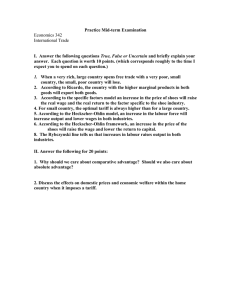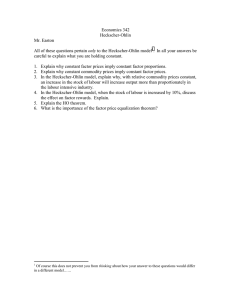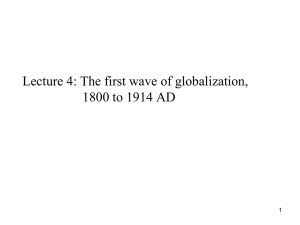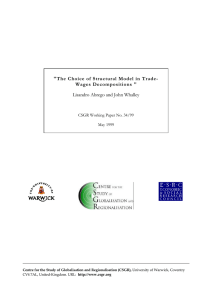Document 12702927
advertisement
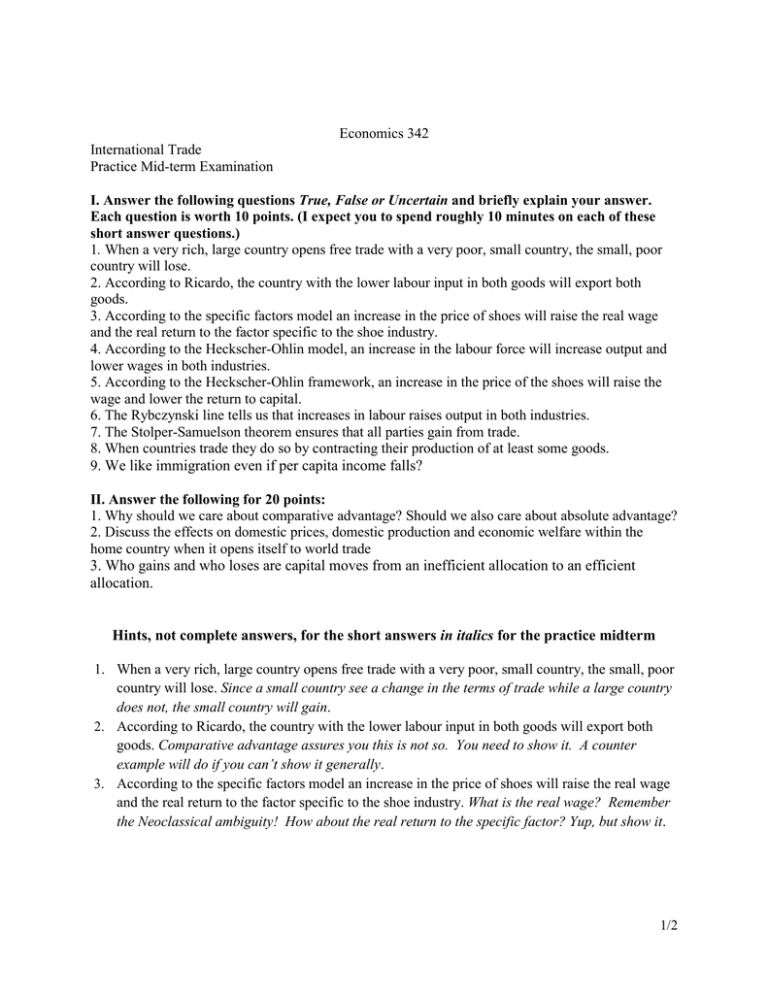
Economics 342 International Trade Practice Mid-term Examination I. Answer the following questions True, False or Uncertain and briefly explain your answer. Each question is worth 10 points. (I expect you to spend roughly 10 minutes on each of these short answer questions.) 1. When a very rich, large country opens free trade with a very poor, small country, the small, poor country will lose. 2. According to Ricardo, the country with the lower labour input in both goods will export both goods. 3. According to the specific factors model an increase in the price of shoes will raise the real wage and the real return to the factor specific to the shoe industry. 4. According to the Heckscher-Ohlin model, an increase in the labour force will increase output and lower wages in both industries. 5. According to the Heckscher-Ohlin framework, an increase in the price of the shoes will raise the wage and lower the return to capital. 6. The Rybczynski line tells us that increases in labour raises output in both industries. 7. The Stolper-Samuelson theorem ensures that all parties gain from trade. 8. When countries trade they do so by contracting their production of at least some goods. 9. We like immigration even if per capita income falls? II. Answer the following for 20 points: 1. Why should we care about comparative advantage? Should we also care about absolute advantage? 2. Discuss the effects on domestic prices, domestic production and economic welfare within the home country when it opens itself to world trade 3. Who gains and who loses are capital moves from an inefficient allocation to an efficient allocation. Hints, not complete answers, for the short answers in italics for the practice midterm 1. When a very rich, large country opens free trade with a very poor, small country, the small, poor country will lose. Since a small country see a change in the terms of trade while a large country does not, the small country will gain. 2. According to Ricardo, the country with the lower labour input in both goods will export both goods. Comparative advantage assures you this is not so. You need to show it. A counter example will do if you can’t show it generally. 3. According to the specific factors model an increase in the price of shoes will raise the real wage and the real return to the factor specific to the shoe industry. What is the real wage? Remember the Neoclassical ambiguity! How about the real return to the specific factor? Yup, but show it. 1/2 4. According to the Heckscher-Ohlin model, an increase in the labour force will increase output and lower wages in both industries. Think about prices. Are they being held constant? Yes. This is the Rybczynski theorem for output, so no, and no to the effect on wages in either industry. 5. According to the Heckscher-Ohlin framework, an increase in the price of the shoes will raise the wage and lower the return to capital. Only if there is the right factor intensity…. 6. The Rybczynski line tells us that increases in labour raises output in both industries. Nope. 7. The Stolper-Samuelson theorem ensures that all parties gain from trade. No such guarantee. It ensures that one factor emerges as a winner and one as a loser! 8. When countries trade they do so by contracting their production of at least some goods. They certainly do if they specialize. 9. We like immigration even if per capita income falls? Too easy for a hint! 2/2
